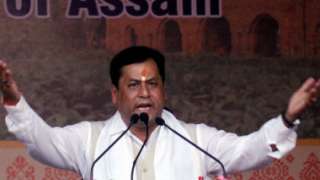MEDIA
Citizenship bill: Submerged in sectarian politics, BJP turns a blind eye to historical complexities of Assamese sub-nationalism
www.firstpost.com | January 18, 2019
The Citizenship (Amendment) Bill introduced in the Lok Sabha in 2016 seeks to amend the existing Act of 1955. The Bill recently passed in the Lok Sabha, aims to grant citizenship to persons belonging to six persecuted faiths — except Muslims — from Afghanistan, Bangladesh and Pakistan after six years of residence (reduced from 11 years) in India. This is partly in keeping with BJP’s poll promise in 2014 to welcome Hindu refugees. Furthermore, the sectarian nature of the Bill also does not extend to persecuted Muslim sects like Ahmediyas and Shias. While the Bill has garnered criticism from many quarters, it's most vocal opponents come from Assam and other states in the North East. Assam’s regional force Asom Gana Parishad has exited the alliance with the ruling BJP government in Assam, arguing that the Bill is in direct violation of the clauses of the Assam Accord.
The Assam Accord, a socio-legal compact signed in 1985 between AASU leaders and Government of India, was a culmination of the anti-foreigners movement led by the influential student body between 1979-85. The mass movement was triggered by allegations that names of thousands of illegal immigrants were detected in the electoral lists for a parliamentary constituency in the state.Political paralysis in the state finally resulted in the Accord that sought to detect foreigners who came to Assam on or after 24 March 1971, their names deleted from electoral rolls and deported in accordance with law. Interestingly, the Assam Accord does not make any exceptions based on religious identities of foreigners so detected. It is this crucial aspect that the Citizenship Bill fails to recognise thereby undermining the historical nuances of subnational politics of borderland states like Assam.
The ongoing National Register of Citizens of India (NRC) update process in Assam is part of the larger process in identifying ‘Bangladeshi infiltrators is the state that have arrived illegally after 24 March 1971. First published after the 1951 census, the updated NRC is expected to be a reference point against which an individual can check her citizenship status. Although contemporary politics in Assam is predicated on the fear of illegal immigrants swamping land belonging to indigenous communities, the ‘sons of the soil’ movement was not a direct result of the settlement of Mymensinghias (Bengali Muslims) into the wastelands of colonial Assam.
Far from being against immigration, the upper caste Assamese as early as 1874, expressed a desire in increasing the population of Assam by importing people from outside. Evidently, the Assamese landed gentry stood to gain from immigration as it promised more income and hence it even supported British policies of settling Bengali Muslim peasants in Assam. Instead, Assamese sub-nationalism began as a protest against the dominance of Bengali Hindu migrants, who came to occupy offices in government and other middle-class occupations in the province. Bengali was the court language as well as medium of instruction in new government schools of Assam from 1837 to 1873, a move widely resented by the Assamese speaking population.
Though partition caused a communal rift in Assam, after Independence, the ‘Language movement’ overshadowed the problem of illegal immigration into Assam. In fact, in the first two decades after Independence, Bengali Muslims were politically allied with the Assamese against Bengali Hindus. Bengali Muslims even returned to Assamese as their language in the Census and sent their children to Assamese-medium schools. Language riots broke out in the 1960s after the Assam government decided to make Assamese as the only official language of state thereby marginalising not only Bengali Hindus but many other ‘indigenous’ groups as well.
As seen in Assam’s case, historically constructed social cleavages can be re-appropriated by political entrepreneurs. In the late 1970s, the issue of illegal immigration and inclusion of aliens in electoral rolls began to gain traction, the kind that was seen in 1930s-40s, in the communalised context of Partition. This movement propelled a class of student activists, both Assamese and ‘tribal’, hitherto marginalised by the Congress, to mainstream politics.
AGP, thus created, mounted a successful challenge against the one-party system of the Congress and provided the state with a regional alternative. This reworking of political alignments also brought into sharper focus religious divisions. Thus while rhetoric against immigrants mostly remained non-sectarian, targeted violence against Bengali Muslims in 1980s was institutionalised. The worst incident was the Nellie massacre in 1983 when 14 villages were simultaneously attacked killing over 1,000 people. Unofficial figures are much higher. Culturally, the Bengali Muslim is othered more systematically than the Bengali Hindu in Assam. This community has been at the receiving end of ethnic violence in Assam in recent years as well. The community is referred with a pejorative ‘Mia’ to reinforce prejudiced views about their sartorial and marital practices, albeit the fact indigenous communities regularly hire them for farm work and casual labour.
Assam sub-nationalism is fraught with complex fault lines. It is shaped both by religious and linguistic cleavages as well as ideas of the territorial indigene and outsider. The Citizenship Bill, embedded in the BJP’s sectarian politics out rightly irons out these complexities. It is another case of the Centre failing to understand the ‘periphery’.
The author is Assistant Professor, FLAME University, Pune.

